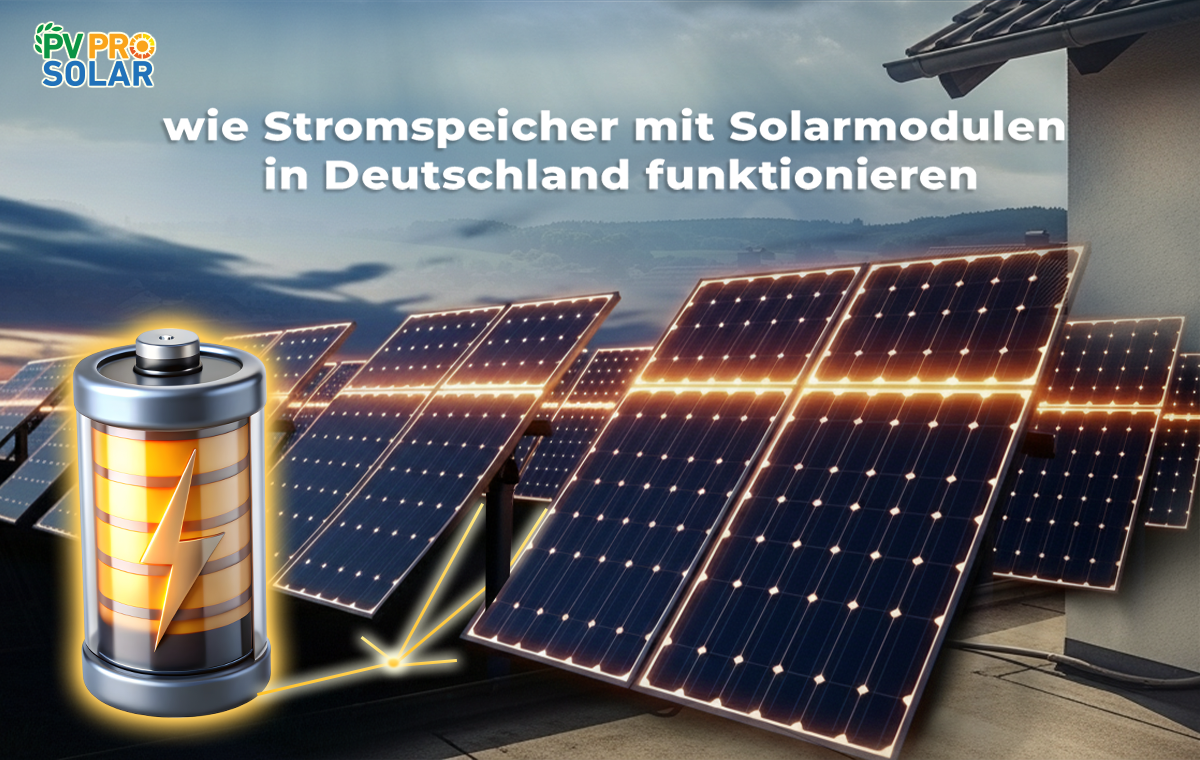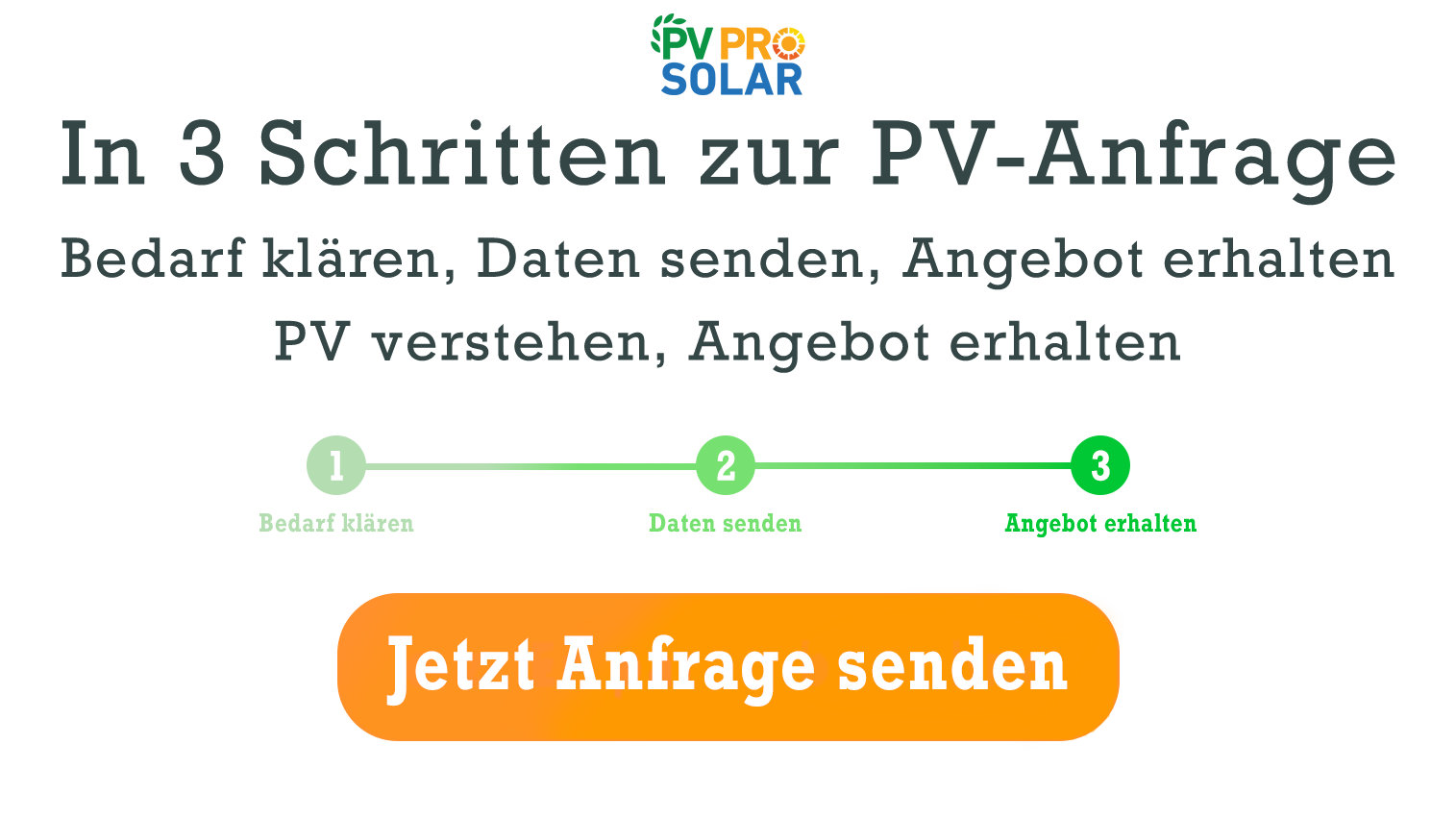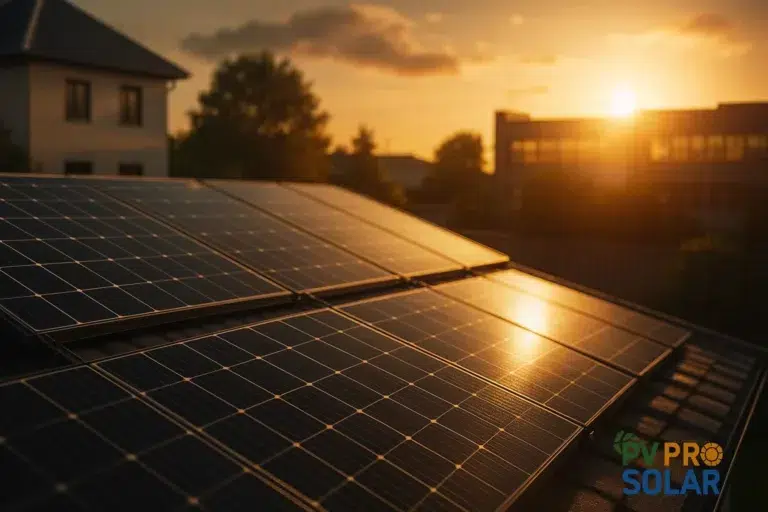How do storage batteries work with solar panels in Germany in 2025?
More and more households and businesses in Germany rely on photovoltaics to cut electricity costs and become less dependent on the grid. But solar panels alone are often not enough, since they only generate electricity during the day. This is where storage batteries come in. They store excess energy and make it usable around the clock. In this article, you will learn in detail how storage batteries work with solar panels, what benefits they bring, and what you should consider.
What are storage batteries, and why are they important for solar panels?
Storage batteries are devices that store excess solar electricity instead of feeding it unused into the grid. Without storage, electricity from solar panels only flows when the sun shines. This creates a problem: in the evening, when consumption rises, solar panels no longer deliver electricity.
Storage batteries solve this issue. They make solar electricity flexibly available and increase self-consumption. In Germany, demand is rising quickly. In 2024, more than 650,000 new storage batteries were installed.
How does the combination of solar panels and storage batteries work technically?
The process can be divided into four steps:
- Solar power generation: Solar panels convert sunlight into direct current (DC).
- Conversion: An inverter converts the electricity into alternating current (AC) for household use.
- Storage: Excess electricity is stored in the battery.
- Usage: When no sun is available, the battery supplies electricity to the home grid.
An energy management system controls whether the electricity is used directly, stored, or fed into the public grid.
What types of storage batteries exist in Germany?
- Lithium-ion batteries: Standard solution, high efficiency, lifespan up to 15 years.
- Lead-acid batteries: Cheaper, but heavier and less efficient.
- Saltwater batteries: Eco-friendly, but still rare.
- Redox-flow batteries: Suitable for large storage projects, but hardly used in private homes.
More than 95% of installed storage in Germany is based on lithium-ion technology
How does the energy flow between solar panels, storage, and the grid work?
- Daytime: Panels generate electricity. Part is consumed directly, and the rest is stored.
- Evening: Battery supplies the household with power.
- When full, Excess is fed into the grid.
- In short, the home draws electricity from the public grid.
This setup allows households with storage to reach up to 70% energy independence.
How big should a storage battery be for a single-family house?
The right size depends on consumption and the PV system:
- Average consumption: 4,000–5,000 kWh per year
- Typical PV system: 7–10 kWp
- Recommended battery capacity: 5–10 kWh
Rule of thumb: The battery should cover the household’s nightly consumption.
What benefits do storage batteries bring to private households?
- Higher self-consumption (up to 80% vs. 30% without storage)
- Independence from rising electricity prices
- Security of supply during power outages
- Contribution to the energy transition
A Fraunhofer ISE study shows: households with storage cut their electricity bills by up to 65%.
How do businesses and industry benefit from storage batteries?
- Reduction of peak loads (peak shaving)
- Lower energy costs
- Security during grid failures
- Improved CO₂ balance
Industrial companies often use larger storage solutions above 100 kWh.
What role do intelligent energy management systems play?
Modern systems optimize automatically:
- When electricity is stored
- When electricity is consumed
- When electricity is fed into the grid
They also integrate heat pumps, EVs, and smart home devices.
What costs arise for storage batteries with solar panels in Germany?
- Households: €7,000–12,000 for storage (5–10 kWh)
- Businesses: €20,000–100,000 depending on size
- Complete systems (PV + storage): from €18,000
Prices continue to fall. Since 2015, storage costs have dropped by over 50%.
Are there subsidies and incentives for storage batteries in 2025?
Yes. Options include:
- KfW programs (low-interest loans)
- State-level subsidies (e.g., Bavaria, NRW, Lower Saxony)
- Incentives for EV owners (combination with wallbox)
Subsidies range between €200 and €1,500 per storage unit.
How long do storage batteries last, and how sustainable are they?
- Lithium-ion: 10–15 years, about 6,000 cycles
- Lead-acid: 5–8 years, fewer cycles
- Sustainability: Recycling rate for lithium batteries in Germany is 70–80%
How do lithium-ion batteries differ from other technologies?
- Efficiency: Lithium-ion >90%, lead-acid 70–80%
- Lifespan: Lithium-ion 10–15 years, lead-acid shorter
- Costs: Lithium mois re expensive, but cheaper in the long run
Which storage battery manufacturers lead in Germany?
- Sonnen GmbH (Allgäu)
- E3/DC (Osnabrück)
- BYD (China, large market share in Germany)
- Tesla Powerwall
- SENEC
How will the storage battery market develop by 2030?
- Forecast: Over 2 million storage batteries in Germany by 2030
- Drivers: Electricity prices, electromobility, subsidies
- Trend: Larger storage + smart networking
What mistakes should consumers avoid when buying storage batteries?
- Choosing a battery too small or too large
- Looking only at the purchase price
- Not using subsidies
- Missing maintenance contracts
How can storage batteries be integrated into existing PV systems?
Two options:
- AC-coupled: Easy to retrofit, flexible, minimal efficiency loss
- DC-coupled: More efficient, but usually best for new installations
What role does the feed-in tariff play with storage batteries?
The feed-in tariff in 2025 is about 7–8 cents/kWh. Self-consumption saves about 35 cents/kWh. Storage, therefore, pays off more and more.
How safe are storage batteries in daily operation?
- Overheating protection, fire protection, emergency shutoffs
- TÜV-certified systems
- Lithium-ion is considered safe when installed correctly
How is maintenance of storage batteries carried out?
- Annual inspection recommended
- Software updates via energy management systems
- Minimal cleaning required
Are storage batteries with solar panels in Germany really worth it?
Yes, especially with rising electricity prices. Studies show a payback period of 8–12 years for typical households.
Storage batteries make solar panels in Germany much more efficient and economical. They allow households and businesses to use more of their own electricity, cut costs, and reduce dependence on the grid. With technological advances, falling prices, and state subsidies, storage batteries in 2025 are more attractive than ever. Whether for private homes, businesses, or industry, storage batteries are a key element of the energy transition and ensure a sustainable power supply.
A storage battery with 5–10 kWh capacity is sufficient for most households with 4,000–5,000 kWh annual consumption.
Yes. Various states and the KfW provide grants and loans, often between €200 and €1,500 per storage unit. What storage size is suitable for a single-family home in Germany?
Are there subsidies for storage batteries with solar panels in 2025?









